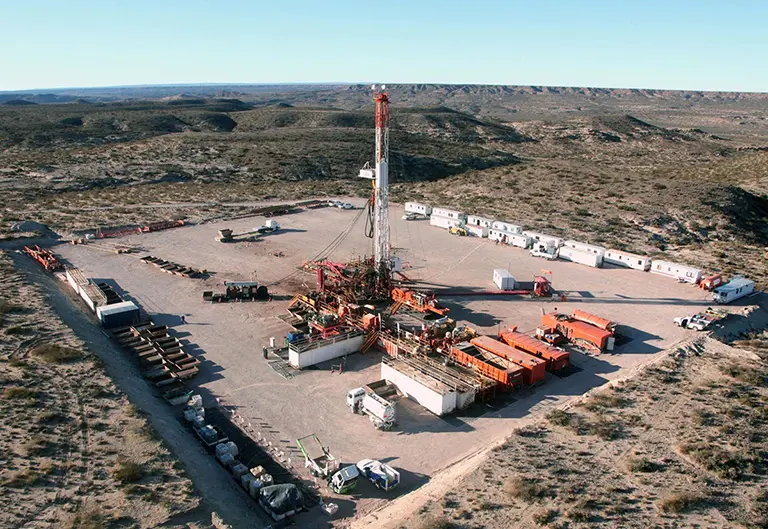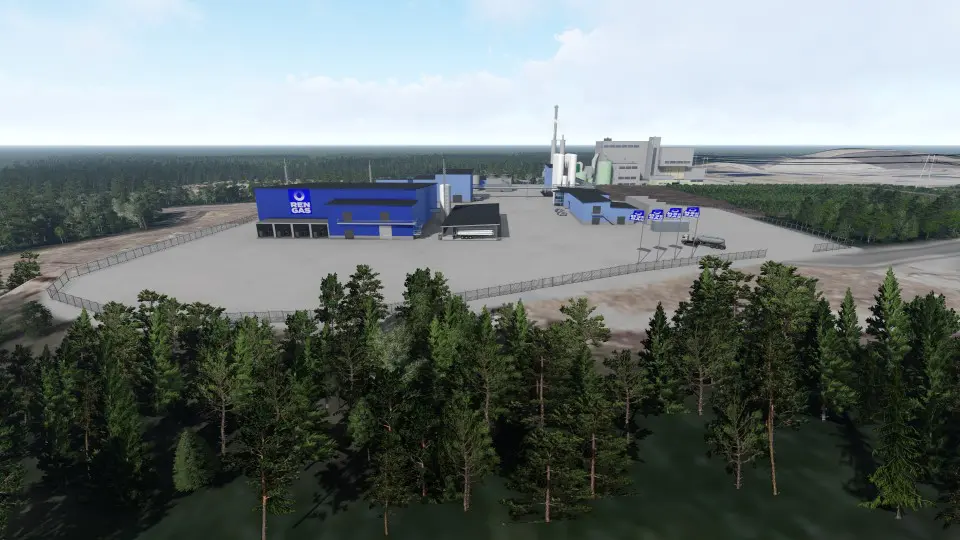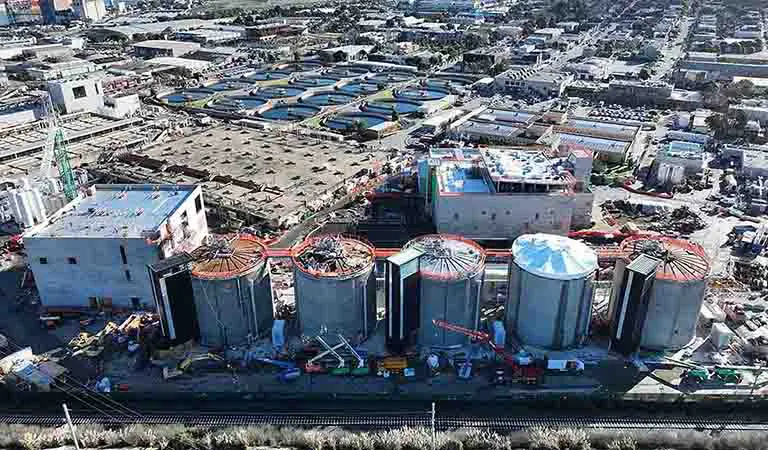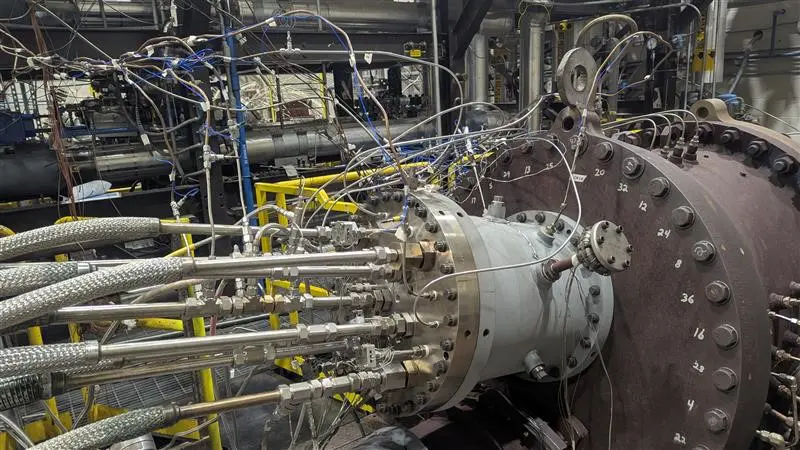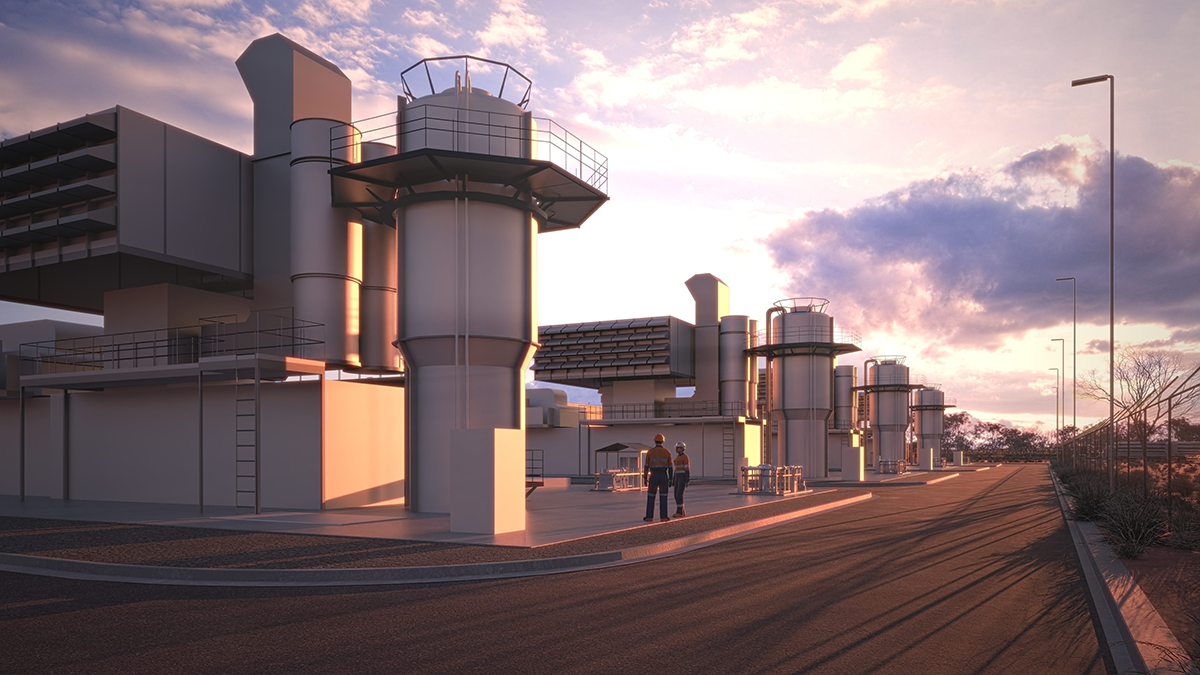
A Solar-Powered Super Bowl
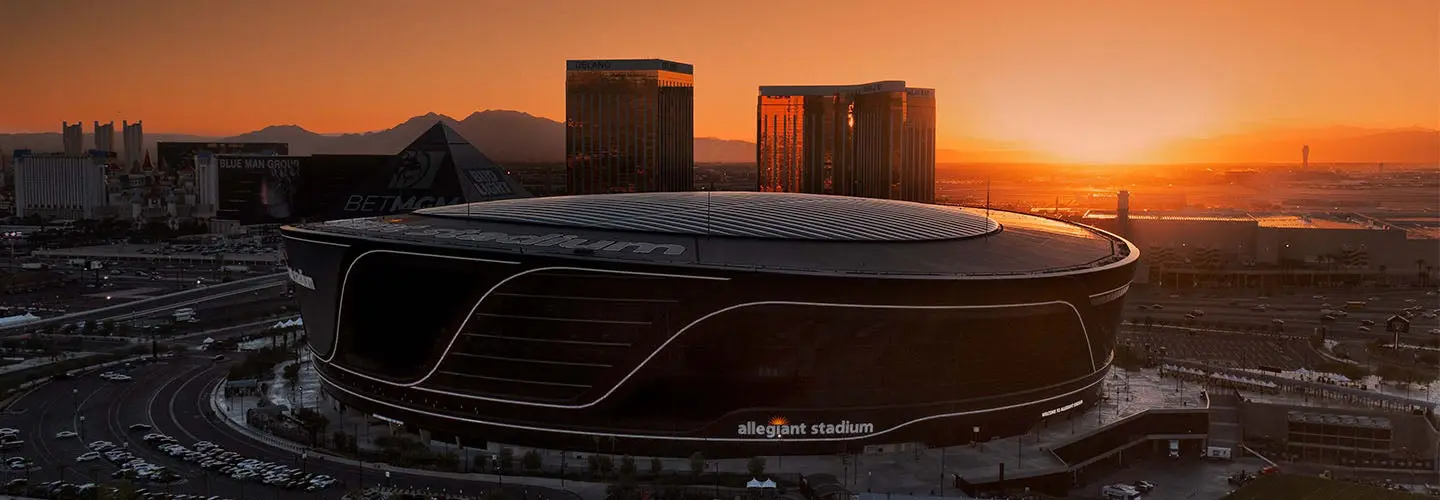
The history of Las Vegas is rooted in resource deficiency. The region’s water resources are continuously in question. The lack of arable land puts pressure on food imports from surrounding states like California. However, one thing Las Vegas is not lacking is renewable energy, specifically solar energy.
Allegiant Stadium, home of the Las Vegas Raiders and host of Super Bowl LVIII, was built in 2020 with sustainability in mind. On October 6, The Las Vegas Raiders and Allegiant Stadium, in partnership with NV Energy, announced the stadium’s conversion to 100% renewable energy. Allegiant became the first NFL stadium powered exclusively by renewable energy. “The Las Vegas Raiders are proud to set the bar in sustainability not only for the NFL but for sports around the world,” said Raiders President Sandra Douglass Morgan. “We have a responsibility to our fans, players, community, and planet to tackle sustainability head-on and set a new standard for sustainability in sports. Our reach and impact extend far beyond the game.”
In collaboration with NV Energy, the Raiders and Allegiant Stadium have strived to conserve energy usage at the stadium for all events held there. This milestone of operating Allegiant Stadium with 100% renewable energy will help minimize the stadium’s environmental footprint and significantly reduce energy use costs. The announcement came on the heels of Allegiant Stadium successfully obtaining Leadership In Energy & Environmental Design (LEED) Gold Certification in July.
“Allegiant Stadium is excited to reach this tremendous milestone in our ongoing sustainability efforts,” said Allegiant Stadium’s General Manager Chris Wright. “It has been and will continue to be our mission to develop and improve sustainable policies that reduce our environmental footprint while bringing world-class concerts, sporting events, and corporate events to Las Vegas. It is an honor to be the first stadium in North America to reach this achievement and to set the standard for what is possible as we continue to make an impact on the Las Vegas community and beyond.”
The renewable power supplied to the stadium is produced within Nevada and serves the stadium and other NV Energy customers. According to NV Energy, the renewable energy solution they identified guarantees cost stability now and for years to come for the stadium.
“NV Energy is honored to be the energy supplier for the Las Vegas Raiders and their home at Allegiant Stadium,” said Doug Cannon, NV Energy president and chief executive officer. “This project is emblematic of our commitment to meeting our customers’ unique energy needs and identifying an innovative path forward to meet the Raiders’ and Allegiant Stadium’s vision of being the first NFL team and stadium powered by all renewable energy — this renewable energy project is a win for the environment and demonstrates NV Energy’s ongoing commitment to powering Nevada with more sustainable energy.”
Other Sustainability Initiatives
Energy Efficiency
Allegiant Stadium features a chiller plant, high-efficiency air handling units, energy optimizing lighting, and an energy efficient lighting control system. The stadium’s engineering team is consistently finding ways to improve energy efficiency through diligent monitoring of electrical loads and review of energy usage.
Waste Diversion
Allegiant Stadium diverts waste away from the landfill and currently recycles, composts, reuses, or donates 20 material streams. The stadium has a dedicated team that sorts trash on the interior and exterior of the stadium to ensure that recycled material is diverted out of stadium waste.
Food Scrap Collection
On average, 12,000 lb. (5443 kg) of kitchen prep cuttings and end-of-event food scraps are collected per large stadium event. This waste is provided to a local Las Vegas livestock farm and is used as feed for farm animals.
Cigarette Waste Collection
Allegiant Stadium is the first stadium in the United States to divert cigarette waste from the landfill and convert that waste into energy. The stadium is improving landfill diversion, aiding in fire prevention, contributing to water improvements, and enhancing overall community health. According to Allegiant Stadium, 69,782 Watts of energy have been created from this program — enough energy to charge 13,955 cell phones for 1 hour.
Raiders Field Grass Clippings
Through a local Las Vegas vendor and in collaboration with the grounds crew, Allegiant Stadium diverts all grass clippings. With the addition of the biomass machine, field grass clippings are placed in the machine and turned into biochar. A total of 78.85 tons (71.53 tonnes) of grass clippings along with external landscaping waste have been composted.
Rubber Pellet Recycling
At the end of each turf event, Allegiant Stadium team members work together to collect used rubber turf pellets for recycling. Although these rubber pellets are impressively small, they have accumulated more than 46.2 tons (41.9 tonnes) of rubber pellets and various rubber materials of waste diverted away from the landfill.
ETFE Roof
One of the most prominent energy efficient features of the stadium is its roof. The roof is composed of ETFE (Ethylenetetrafluorethylene) which provides benefits of climate adaptability, insulation performance, self-cleaning, a long lifespan, and is a recyclable material.
Energy Efficient Design Features
The venue features a high-efficiency cooling tower, chiller plant, and air handling units. LED’s throughout the stadium also lessens the electrical burden.
BMS System
The engineering team diligently tracks and reviews energy optimization data in real time to effectively make decisions on Allegiant Stadium’s daily and event-driven energy centric operations.
External Landscaping
Green landscaping practices are in place to develop systems surrounding seasonal water scheduling, mulching, and composting of all landscaping waste. The stadium also features a system for subsurface dewatering stations, which discharges groundwater that has been collected and expels the water into the plant beds around the exterior of the stadium.
Efficient Fixtures
During the planning and construction phases of Allegiant Stadium, water efficient fixtures were selected to mitigate excessive water use on a daily and event basis. An estimated average of 535 million gallons (2025 liters) of water is saved due to these high-efficiency fixtures.
Water Meters
Meters on Allegiant Stadium’s cooling towers and other equipment and fixtures allow stadium management to consistently track and make decisions on proper water management practices.

